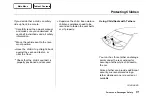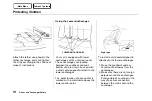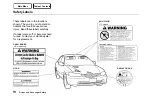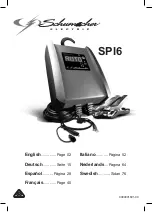
Protecting Children
A child may continue using a booster
seat until the tops of the ears are
even with the top of the seat-back. A
child of this height should be tall
enough to use the lap/shoulder belt
without a booster.
When Can a Larger Child Sit in Front
The National Highway Traffic Safety
Administration and Transport
Canada recommend that all children
ages 12 and under be properly
restrained in a back seat.
The back seat is the safest place for
a child of any age or size.
In addition, the passenger's front
airbag poses serious risks to children.
If the seat is too far forward, or the
child's head is thrown forward
during a collision, or the child is
unrestrained or out of position, an
inflating front airbag can kill or
seriously injure the child.
The side airbag also poses risks. If
any part of a larger child's body is in
the path of a deploying airbag, the
child could receive possibly serious
injuries.
Of course, children vary widely. And
while age may be one indicator of
when a child can safely ride in the
front, there are other important
factors you should consider.
Physical Size
Physically, a child must be large
enough for the lap/shoulder belt to
properly fit over the hips, chest, and
and
). If
the seat belt does not fit properly,
the child should not sit in the front.
Maturity
To safely ride in front, a child must
be able to follow the rules, including
sitting properly and wearing the seat
belt properly throughout a ride.
Driver and Passenger Safety
Main Menu
Main Menu
Main Menu
Main Menu
Table of Contents
Summary of Contents for 2001 Accord Sedan
Page 7: ...4 4 Main Menu ...
Page 179: ...176 Main Menu ...
Page 221: ...218 Main Menu ...
Page 289: ...286 Main Menu ...
Page 321: ...Fuses UNDER HOOD FUSE BOX Taking Care of the Unexpected Main Menu Table of Contents ...
Page 325: ...322 Main Menu ...
Page 341: ...338 Main Menu ...
















































